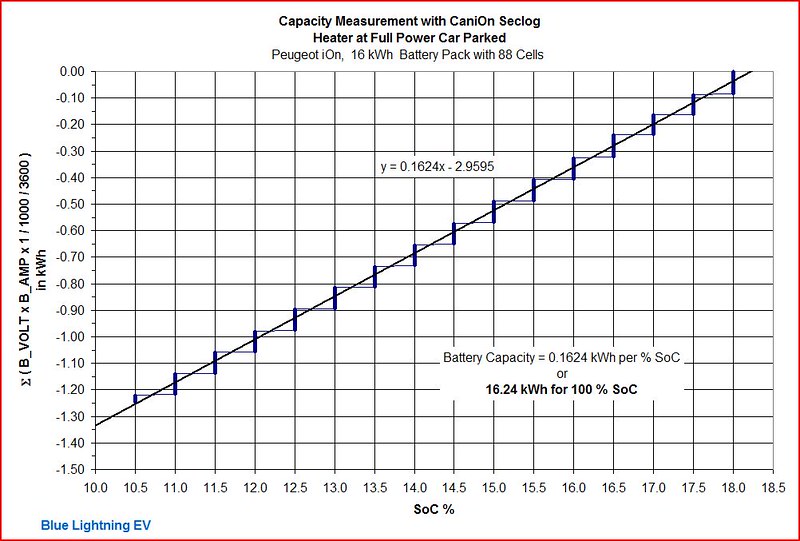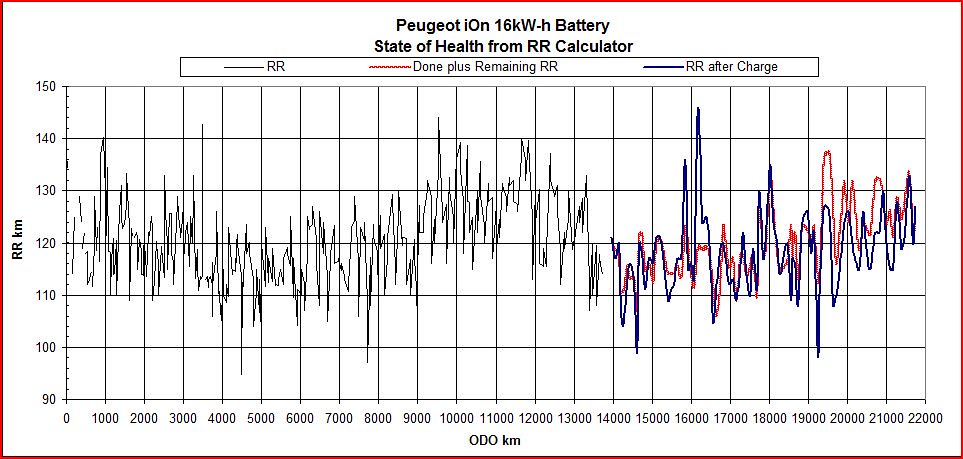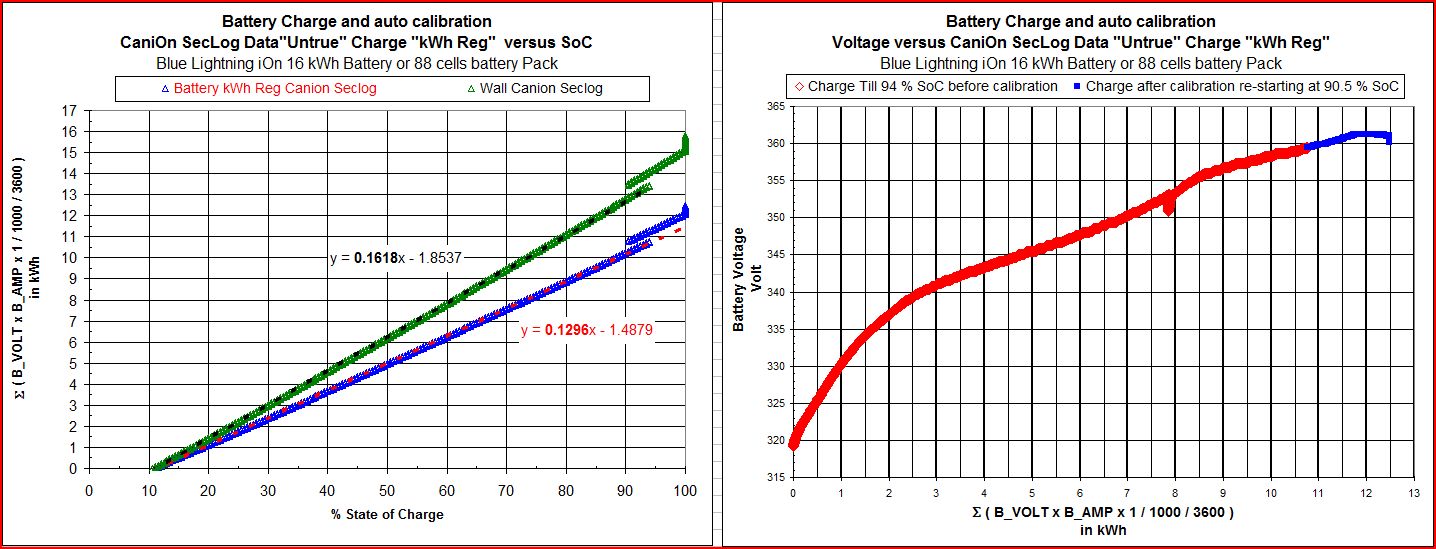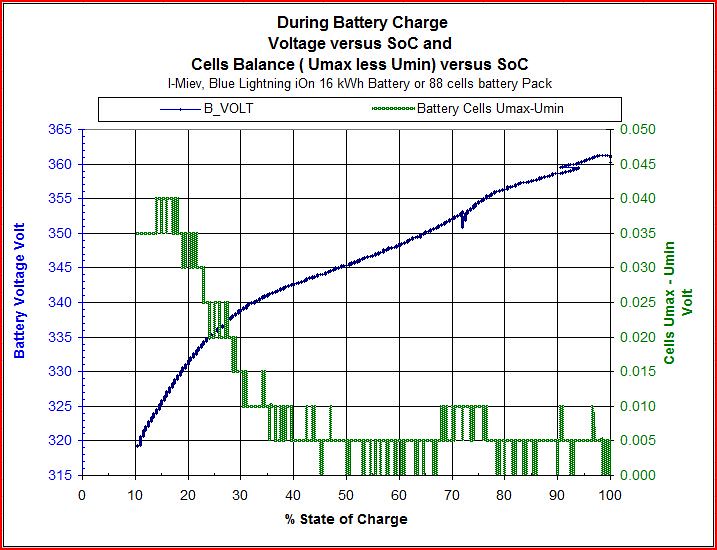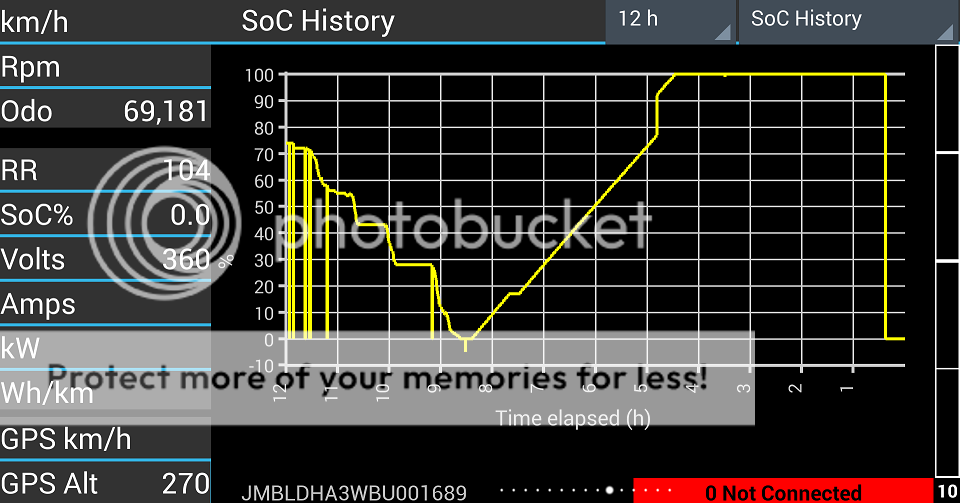The Wh Out given by the on board computer to canion are correct but the Wh Reg given by the on board computer to Canion are unreal and far too pessimistic.
With the help from Canion's Seclog data, below, see a graph Energy in kW-h versus State of Charge in %
Check the slope of the Charge line, 0.1344 kWh per % SoC or 13.44 kW-h for 100% SoC, this number in fact should be around 16 kW-h for 100% SoC, value of the Blue Lightning's battery capacity.
This is where my coefficient come from, 13.44 x 1.2 = 16 kw-h
A ratio of 60/50 or a coefficient of 1.2 is the best match for my iOn electric car which have a 16kWh battery capacity. In other words, this coefficient seems to give a proper result, but for my car only...
While driving, I get a higher slope, 0.1527 kWh per % SoC, but this number is also too low because those kW-h are a mixture of Wh-out when I press the accelerator and Wh Reg when I slow down.
No luck, the above coefficient is not good to correct in a real value those Wh Reg when I drive.
To deal with the Wh out only, the best way is to park the car and put the heat on to make a graph Wh out versus Soc, then me, and some others too, get a line with a slope of 16 kw-h for 100% SoC, Hallelujah..... or less....
No matter about no coefficients, your equation will give a number, if by the time your battery capacity decreases, this number will also decrease.....
Why 60/50 ? Energy is a function of power and time, I was wondering if Mitsubishi was not using the AC current frequency as a timer. AC current frequency in some countries is 50 Herz, in some others, 60 Herz....
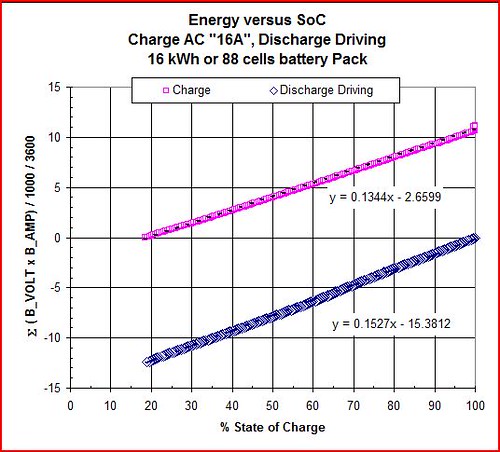 Energy versus SoC
Energy versus SoC



































